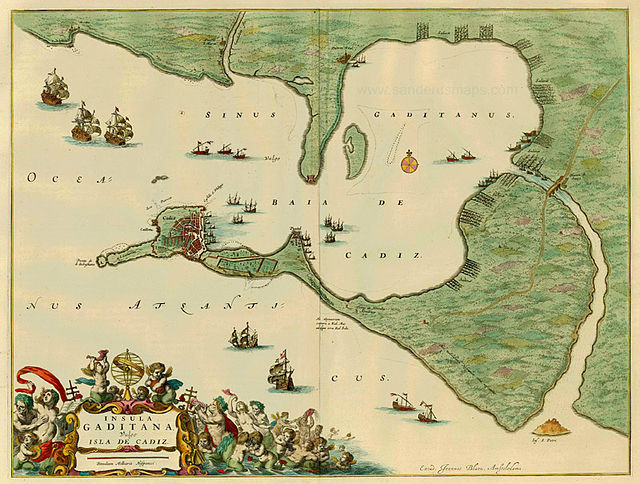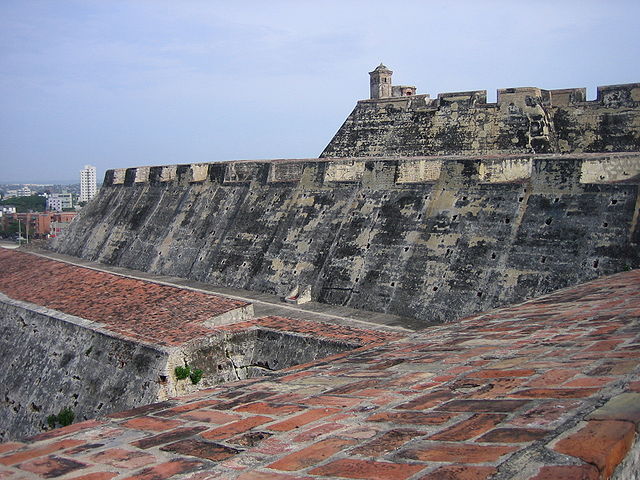The Asiento de Negros was a monopoly contract between the Spanish Crown and various merchants for the right to provide enslaved Africans to colonies in the Spanish Americas. The Spanish Empire rarely engaged in the transatlantic slave trade directly from Africa itself, choosing instead to contract out the importation to foreign merchants from nations more prominent in that part of the world, typically Portuguese and Genoese, but later the Dutch, French, and British. The Asiento did not concern French or British Caribbean but Spanish America.
The island of Cádiz by Blaeu in 1662.
San Juan de Ulúa, Spanish fort in Veracruz, Mexico (2008)
San Felipe, Spanish fort in Cartagena (Colombia).
Jan Valckenburgh
Slavery in colonial Spanish America
Slavery in the Spanish American viceroyalties was an economic and social institution which existed throughout the Spanish Empire including Spain itself. Enslaved Africans were brought over to the continent for their labour, indigenous people were enslaved until the 1543 laws that prohibited it.
Alfonso X of Castile and the Siete Partidas
An Aztec slave
Viceroy Antonio de Mendoza and Tlaxcalan Indians battle with the Caxcanes in the Mixtón War.
Spanish conquistadors in Mexico led by Hernán Cortés. The Spaniards are accompanied by native porters, La Malinche, and a black man (holding the horse). Codex Azcatitlan.








